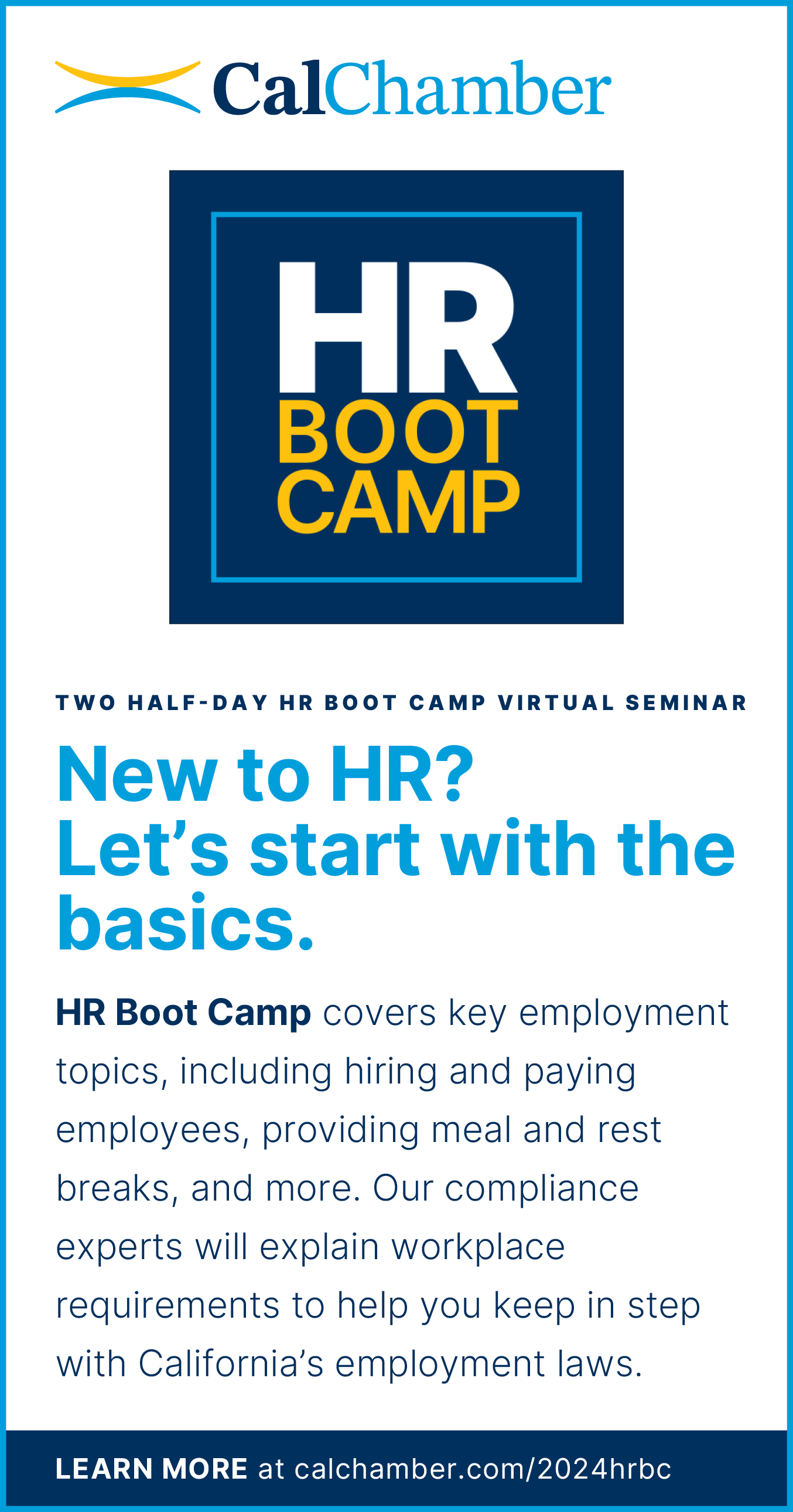 On April 21, 2022, the Occupational Safety and Health Standards Board (OSHSB) approved a third readoption of the California Division of Occupational Safety and Health (Cal/OSHA) Emergency Temporary Standards (ETS) to replace the current version, which was set to expire on May 6, 2022.
On April 21, 2022, the Occupational Safety and Health Standards Board (OSHSB) approved a third readoption of the California Division of Occupational Safety and Health (Cal/OSHA) Emergency Temporary Standards (ETS) to replace the current version, which was set to expire on May 6, 2022.
Many of the revisions updated or removed definitions, as well as provided for more flexibility within the ETS to address changing circumstances around COVID-19’s spread.
The third readoption will take effect immediately upon the Office of Administrative Law approving and filing the regulations with the Secretary of State. This is expected to occur within the first week of May.
Although these rules may feel familiar, it’s important to pay close attention to this ETS version as cases continue to slowly climb and our workplaces may see more cases than we’ve experienced in the last few months. This ETS revision is expected to remain in effect through December 31, 2022.
Updated Definitions
Many new changes include updates to the ETS’s included definitions, which, in large part, drive some of the protocols that employers must follow. The significant definitional changes include:
• “COVID-19 Hazard” is updated to eliminate any references to objects or surfaces that may be contaminated with COVID-19, meaning those areas are no longer considered COVID-19 hazards for ETS purposes. Along with this change, no longer do any cleaning and disinfecting requirements exist under the ETS.
• “COVID-19 Test” is updated to allow the use of a self-administered, self-read COVID-19 test as long as the result includes additional independent verification, such as a time-stamped photograph. This broadens the use of at-home tests for ETS purposes, as previously these had to either create digital records verifying the results or the tests had to be proctored by an employer or telehealth provider.
• “Face Covering” is updated to remove the much-maligned “light test” requirement for compliant cloth masks. In the current ETS, cloth masks can’t allow light to pass through when held up to a light source. While the new ETS revision omits this requirement, it does state that cloth masks must still be made of a tightly woven fabric or non-woven material of at least two layers.
• “Returned case” is a new definition that describes an employee who contracted COVID-19 but recovered. For these purposes, a returned case is someone who has returned to work from an infection and is still within 90 days from either the onset of symptoms or the positive test if no symptoms developed. Because this returned case concept previously has been in the ETS, however, no changes to employers’ policies should be necessary.
Also noteworthy is that the ETS eliminates the definition of “fully vaccinated” employees because ETS rules no longer hinge on their own definition of fully vaccinated employees.
Return to Work Protocols
The second readopted ETS had a complex return to work protocol that was almost never used because, as previously reported, the California Department of Public Health (CDPH) created a completely different set of isolation and quarantine rules that applied to the ETS through Governor Gavin Newsom’s Executive Order N-84-20.
In this new revision, Cal/OSHA essentially codified the CDPH isolation and quarantine rules.
As a reminder, all positive cases — regardless of vaccination status or prior infection — cannot return to work until:
• At least five days have passed since the onset of symptoms or positive test if no symptoms;
• 24 hours have passed since fever resolved; and
• A negative COVID-19 test specimen is taken on the fifth day or later.
Otherwise, the employee remains out for 10 days from onset of symptoms or positive test if asymptomatic.
Face Coverings
Face coverings have been among the most confounding workplace rules for employers — but the revised ETS simplifies them by deferring to the CDPH.
CDPH orders dictate who must wear face masks and when to wear them. Currently, CDPH does not mandate any employee wear face coverings; however, as we have seen throughout the pandemic, this can change at any moment. Further, local public health orders can override the ETS in that jurisdiction. For these reasons, employers should keep an eye on these resources.
The newly revised ETS also has made additional face covering rule changes:
• Now, any employee — regardless of vaccination status — may request their employer provide them with respirators (e.g., N95 respirators). If an employer provides an N95 respirator for voluntary use by employees, they must ensure that it’s the correct size and fits according to the manufacturer’s instructions.
• Exposed employees working at an indoor location who experience an outbreak (three cases within a 14-day period) or major outbreak (20 cases within a 30-day period) — or outdoors who cannot maintain six feet of distancing — must wear face coverings during the outbreak period.
• As for the long-standing face covering exemptions due to medical conditions or because the nature of the work makes wearing a mask unsafe, the previous ETS required employees to physically distance while not wearing face coverings; the new ETS omits this requirement.
Testing
Most testing rules remain the same, and employers must make testing available during paid time to the following employees under the following circumstances:
• Symptomatic employees regardless of vaccination status;
• All employees who are close contacts with a known COVID-19 case, except to those “returned cases;”
• Employees who cannot wear face coverings under a valid exception must be tested once a week; and
• All employees weekly during an outbreak or major outbreak until the employer no longer has any cases in a 14-day period.
Exclusion Periods and Exclusion Pay
A hallmark of the ETS is determining when an employer must exclude an employee from work and when the employer must pay the employee for that exclusion.
In general, these rules will remain the same, and the revised ETS codifies the CDPH table referenced above. Exclusion pay remains unchanged, as employers are also expected to continue an employee’s wages and benefits during the periods that employers must exclude them due to a work-related COVID-19 case, unless workers’ compensation covers it, or due to a work-related close contact exposure with a known COVID-19 case.



